Creative polymath Theaster Gates opens his first solo show in New York
Theaster Gates fuses facets of art history with cultural reclamation in his new exhibition, ‘Black Vessel’ at Gagosian New York
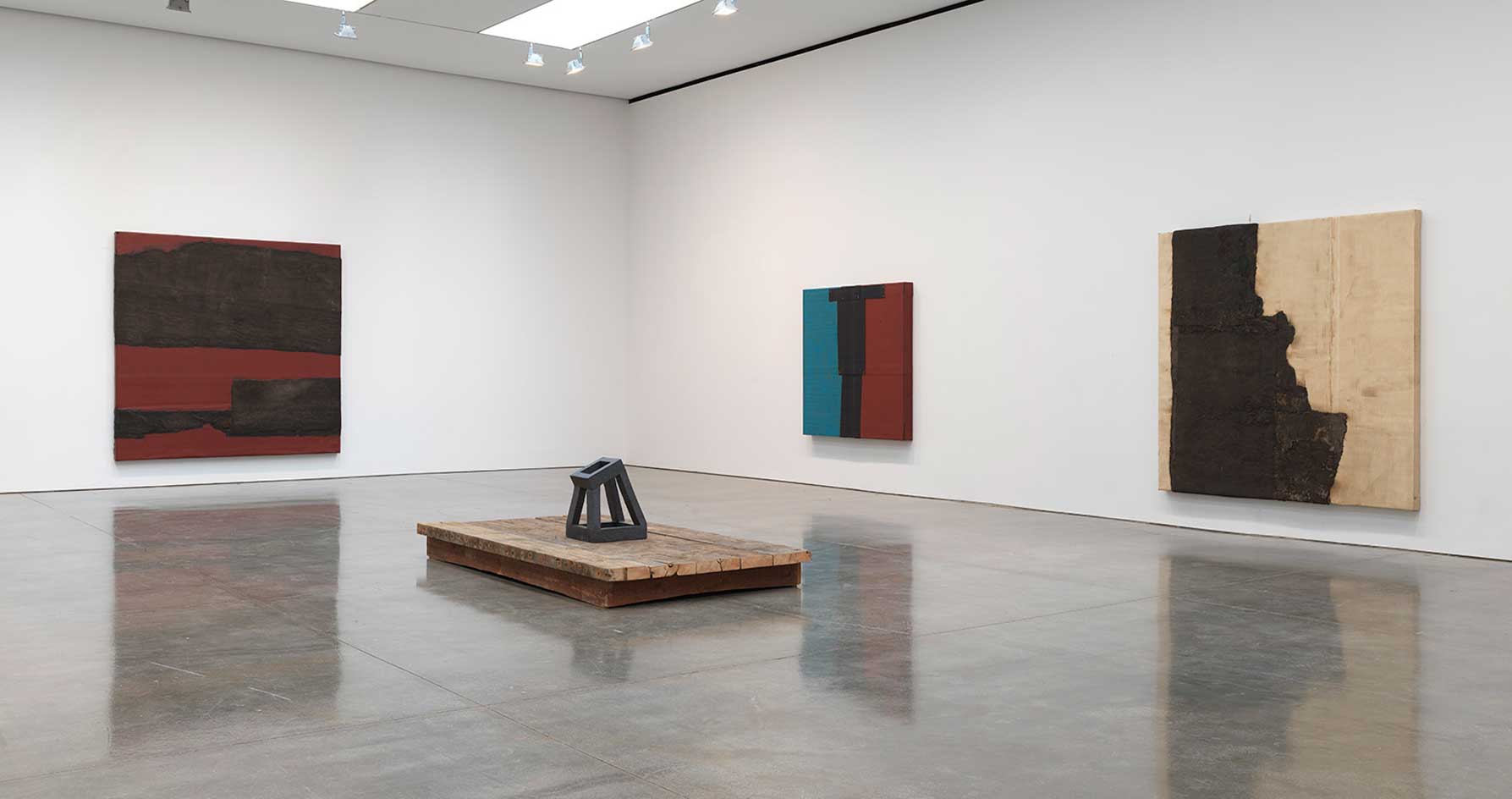
As widely-recognised as the creative polymath Theaster Gates is, his latest show at Gagosian New York, significantly titled ‘Black Vessel’, is still the artist’s first-ever solo exhibition in the Big Apple. A majestic display of sculpture, clay vessels and works on canvas, the exhibition showcases Gates’ poetic ability to layer facets of art history, sound, racial ideology, culture and Black history in a practice that stands for both social empowerment and cultural reclamation.
For this momentous showing, Gates presents four genres of work. In an ode to the title of the exhibition, he has first assembled a collection of 30 vessels, each unique in size, shape and form. With one eye considering the vessel as an archetype through the canon of art history, Gates creates his own versions as a metaphor of contemporary existence, as one might expect.
‘I always find myself returning to the vessel. It is part of the intellectual life force of my practice and it precedes all other forms of making,’ he states, nodding to his training as a potter.
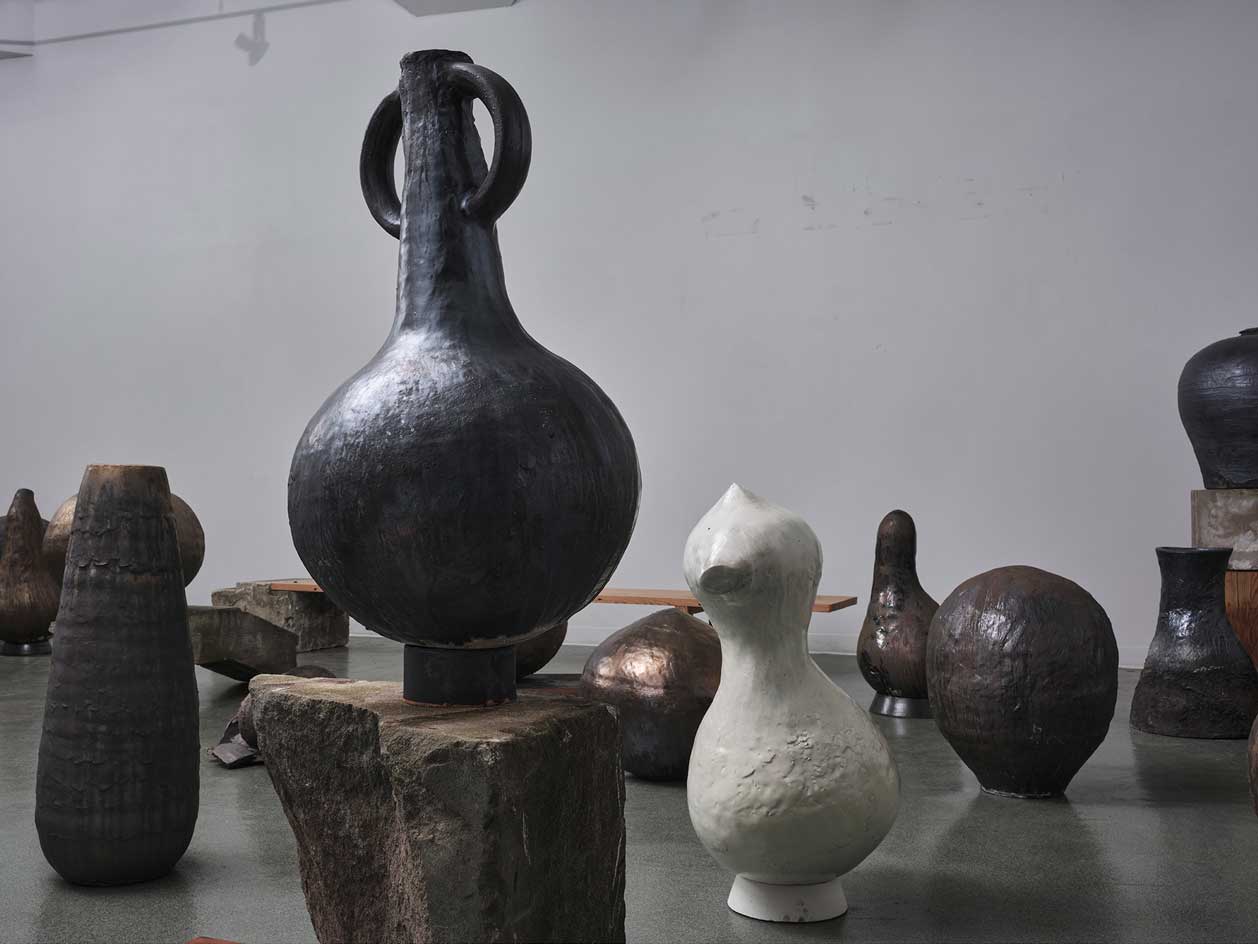
Theaster Gates, Vessel # 2, 2020, © Theaster Gates; courtesy Gagosian
In Gates’ hands, the universality of the vessel as a repository of ritualised significance is put to the fore. His series of large-scale pieces, made from glazed and fired clay, not only draw from the ancient traditions of Eastern, Western and African origins, but also from contemporary aesthetics too. Freestanding or paired with specially made plinths and pedestals, the array of forms and silhouettes elude time and place with their wonderfully varied textures, surfaces and tones.
The archaeological-like display of ceramics is poignantly offset by the west gallery – an enveloping chamber made of black bricks, upcycled from remaindered stock, that stands almost like a vessel itself. Complemented by a sound installation scored by Gates, the installation adds another spiritual dimension to viewing the statuesque objects.
RELATED STORY
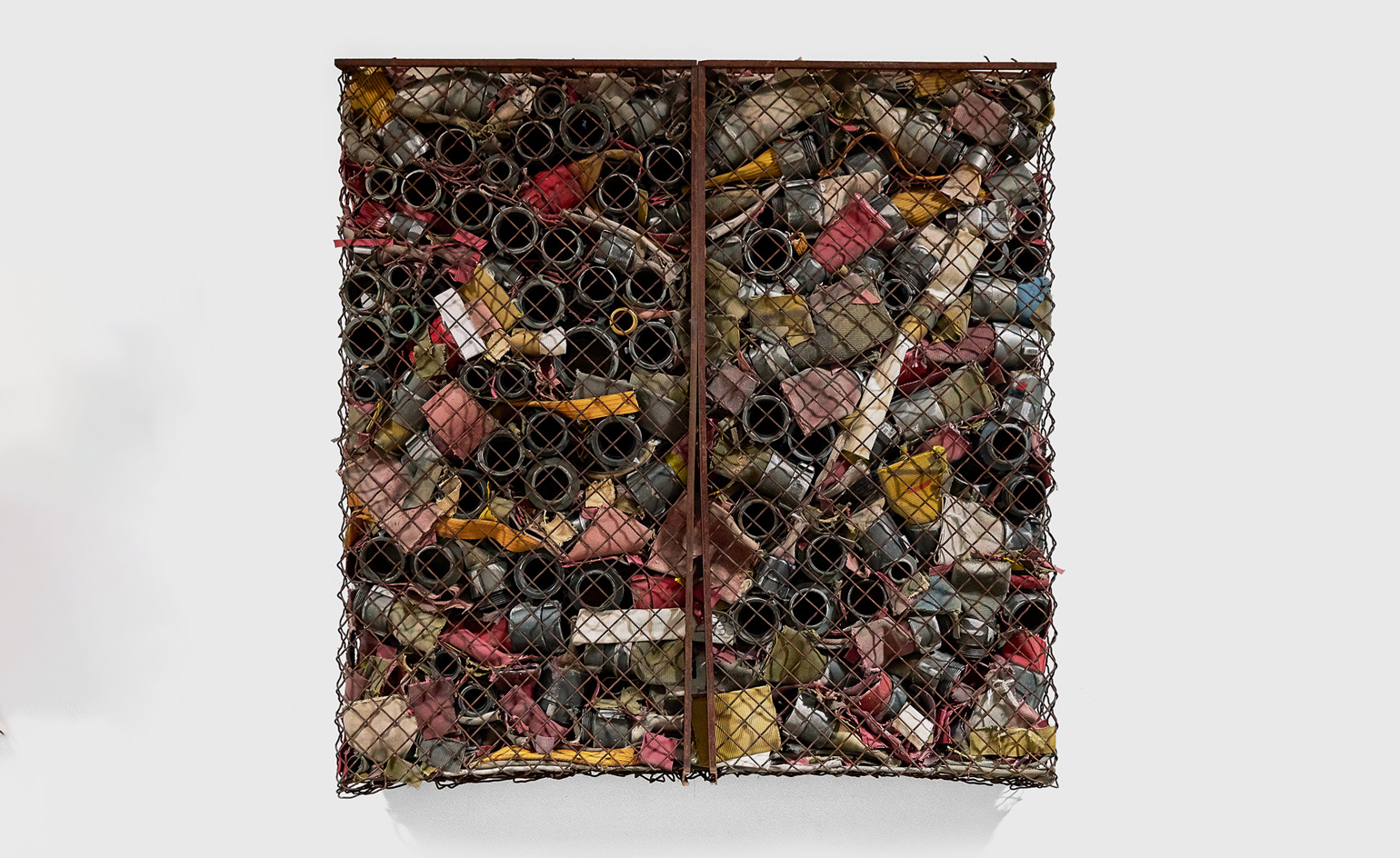
Intervening with space is also the foundation of another arresting work, Walking Prayer, which is ongoing since 2018 and utilises a wide-ranging historical collection of published books on Black experience. The tomes are nobly displayed on vintage Carnegie cast iron shelving that transforms a library setting into a place of worship.
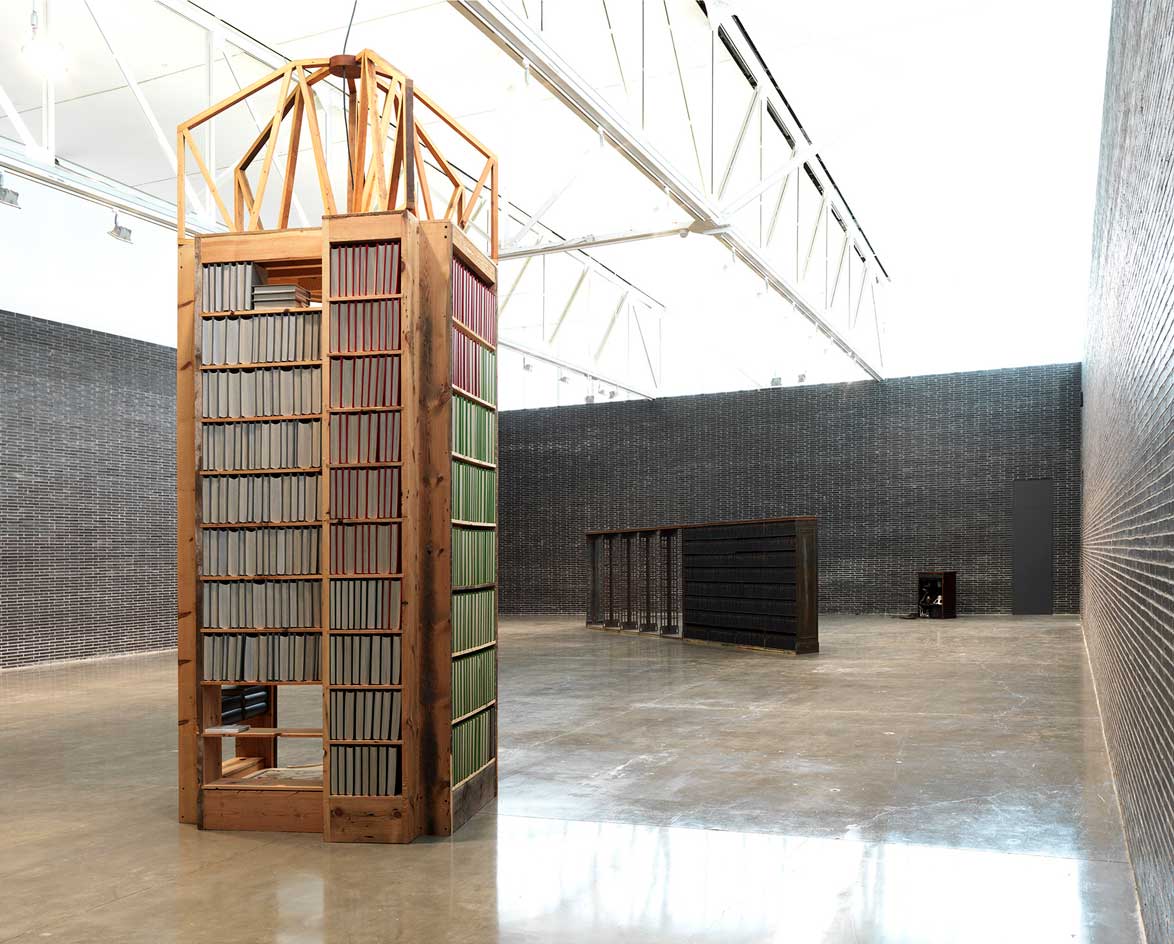
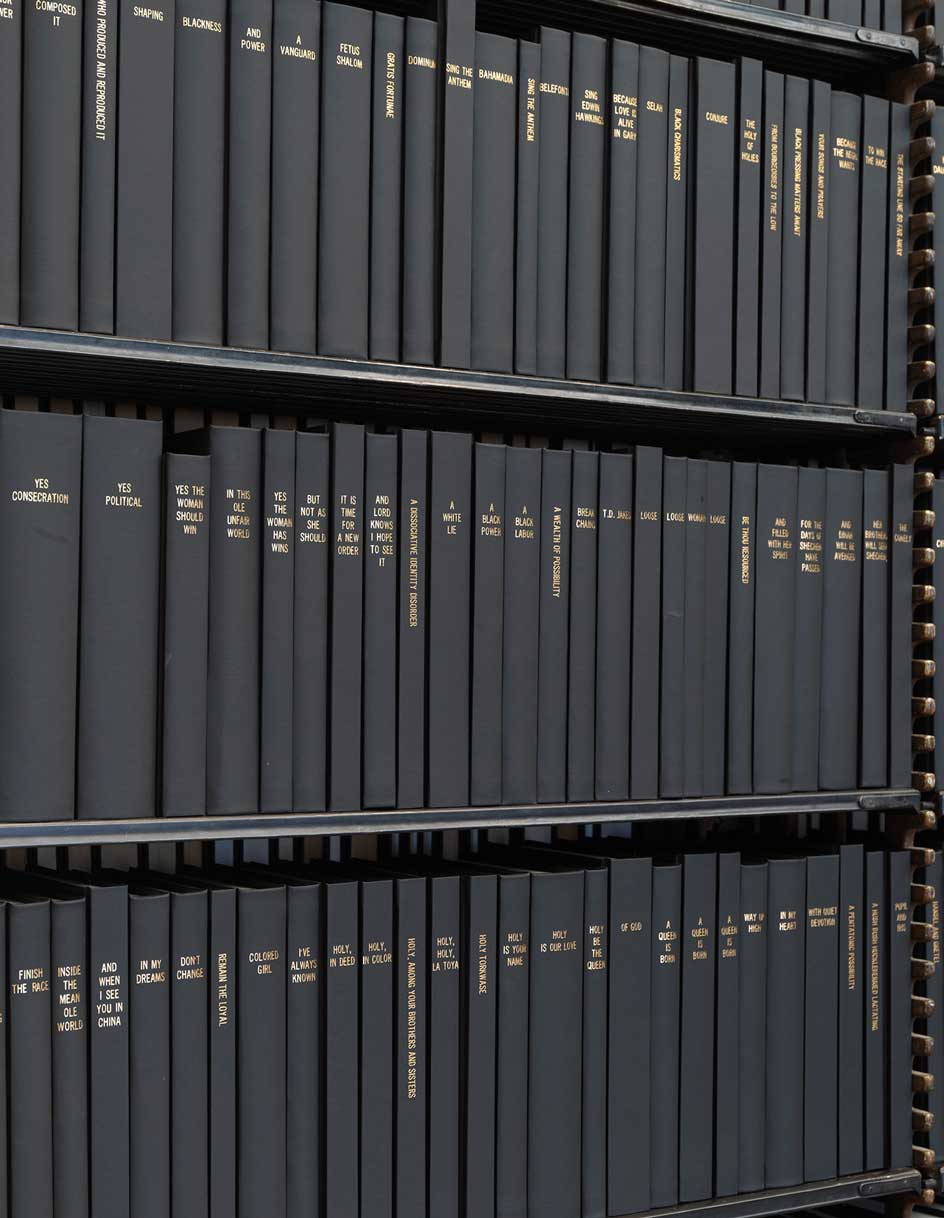
Above: ’Black Vessel’, 2020, installation view. Below: Walking Prayer, 2018–20, detail. © Theaster Gates; courtesy: Gagosian
Speaking about his dynamic approach to his work, Gates shares, ‘My body is capital, my brain is capital, my hands are capital, and the byproducts of my hands are capital. And once I understand my own value, I think about spatial value, the value of other people, the value of people working together, the possibility of exponential value as a result of certain kinds of bodies rubbing up against each other.’
The final component of the show, a suite of tar paintings that are inspired by Gates’ father’s livelihood as a roofer, sees the artist manipulate typical building and construction materials like industrial oil-based enamel, rubber torch down, bitumen and wood, into imposing large-scale wall works that echo the style of postwar American artists.
Dynamic, self-referential and beautifully realised, the four-part survey of Gates’ artistic practice is a captivating reassurance of just how deep he is ready to go.
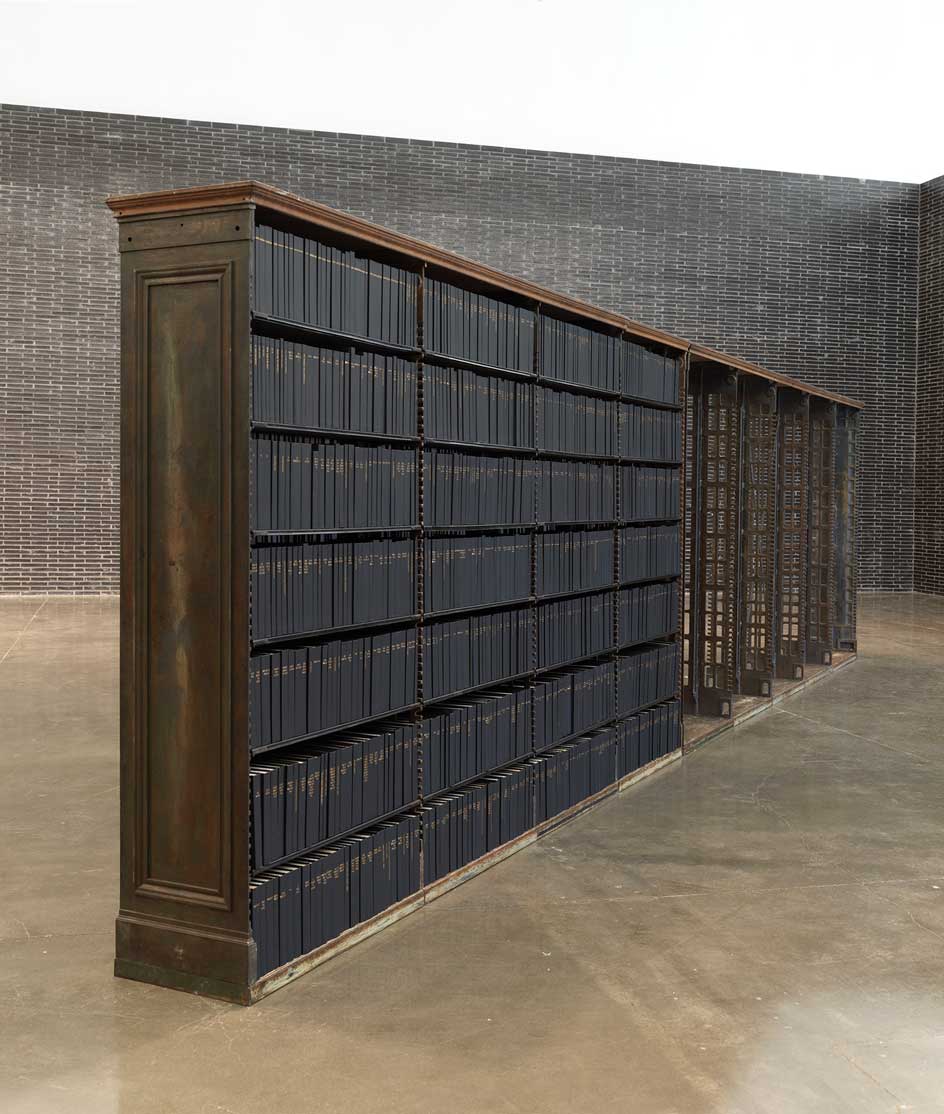
Walking Prayer, 2018–20. © Theaster Gates; courtesy Gagosian
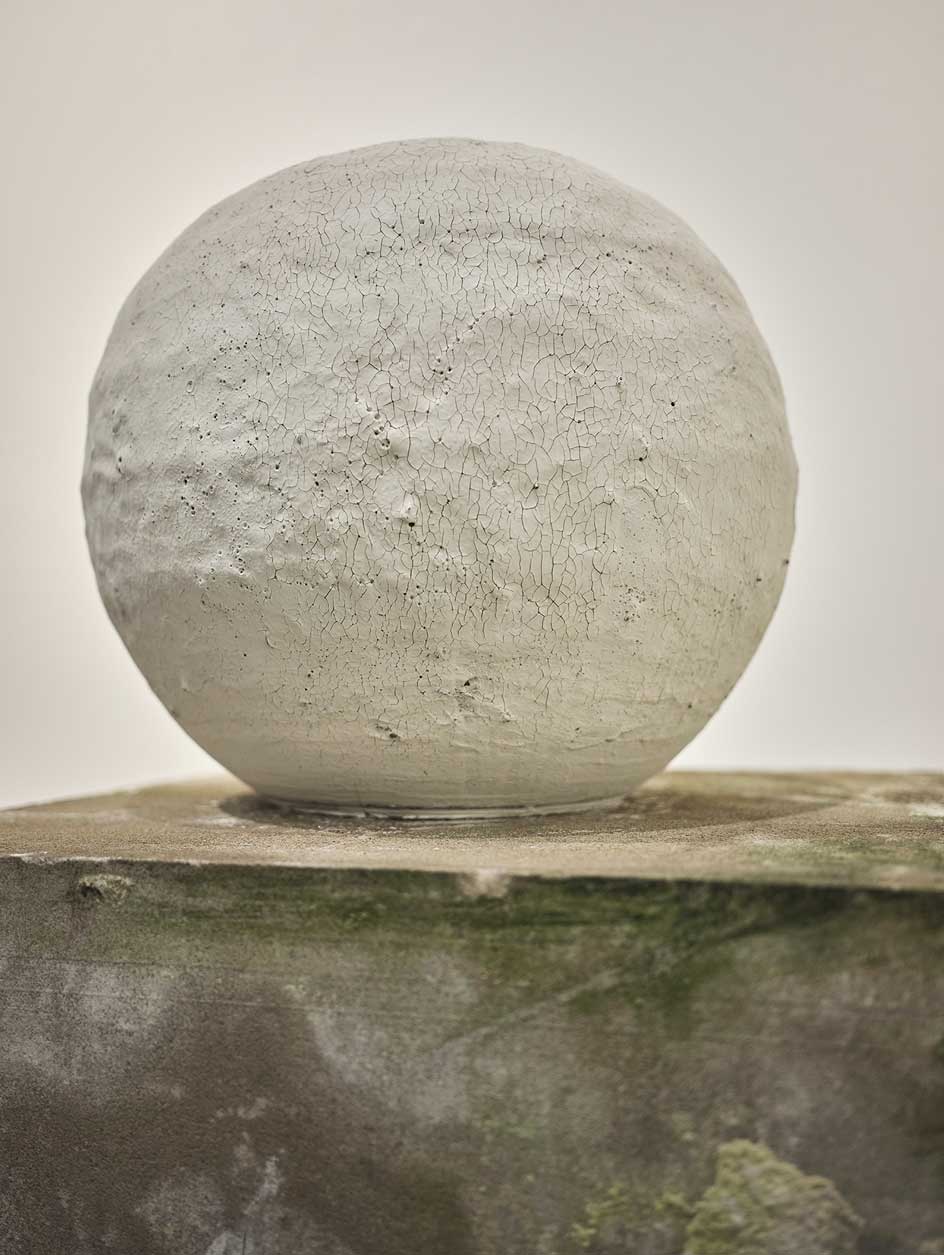
Vessel #25, 2020. © Theaster Gates; Courtesy Gagosian
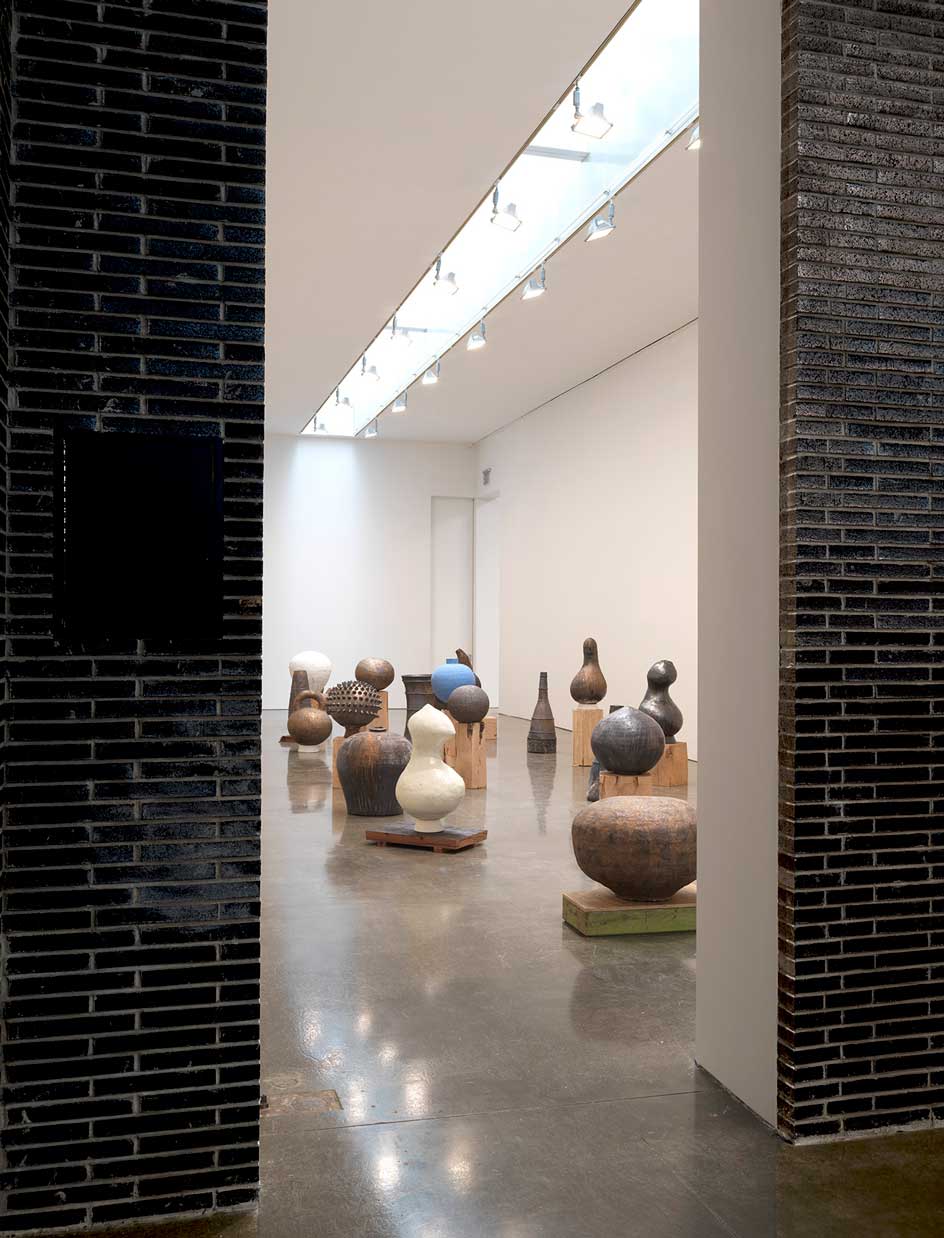
Theaster Gates, ’Black Vessel’, 2020, installation view. Artwork © Theaster Gates; Courtesy Gagosian
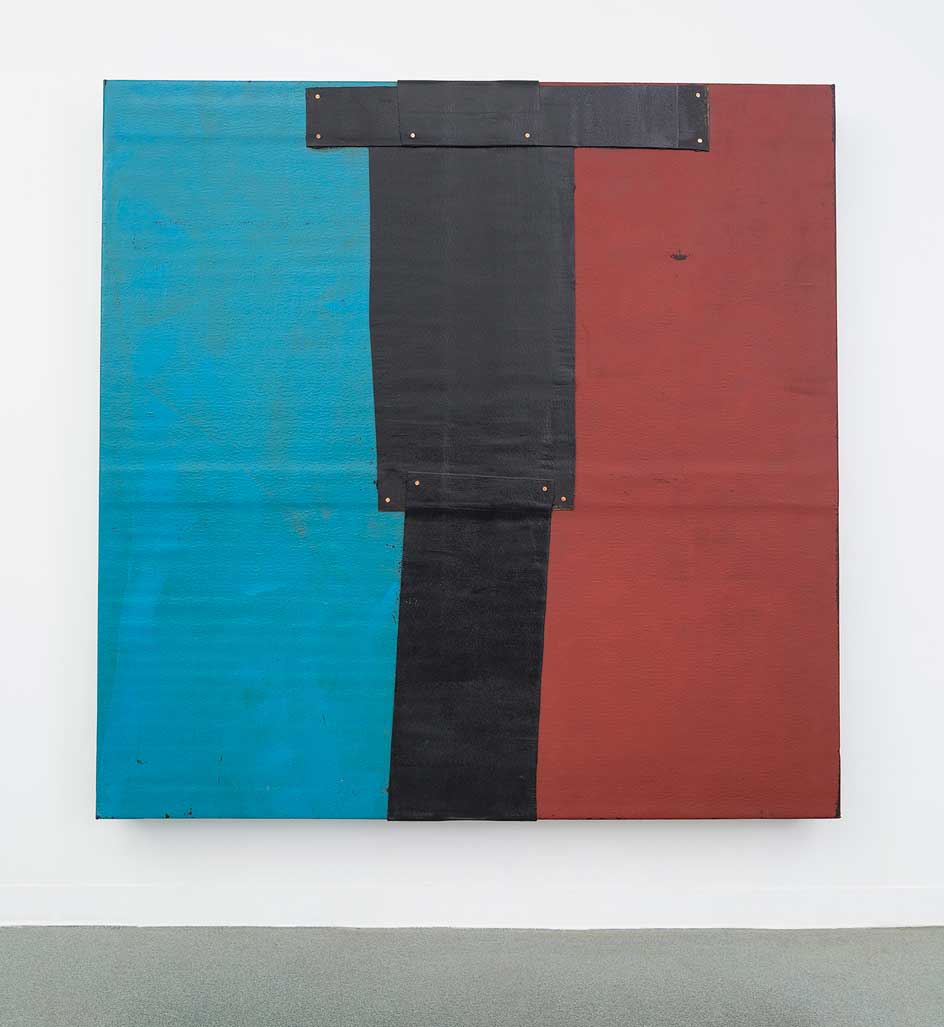
Flag Sketch, 2020. © Theaster Gates; Courtesy Gagosian
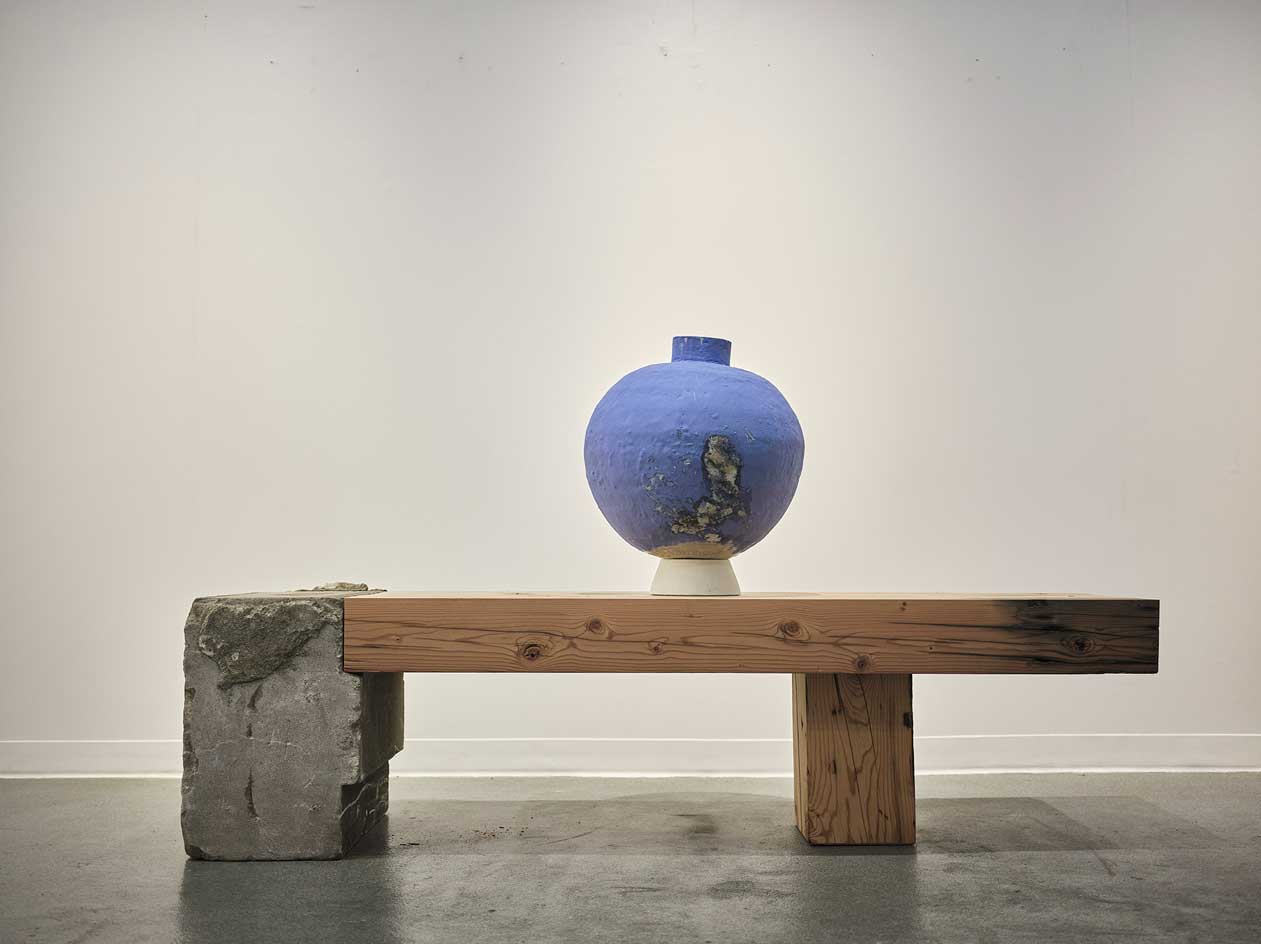
Vessel # 19, 2020. © Theaster Gates; Courtesy Gagosian
INFORMATION
’Black Vessel’, until 19 December, Gagosian, New York. gagosian.com
ADDRESS
Receive our daily digest of inspiration, escapism and design stories from around the world direct to your inbox.
Gagosian
555 West 24th Street
New York, NY 10011
Pei-Ru Keh is a former US Editor at Wallpaper*. Born and raised in Singapore, she has been a New Yorker since 2013. Pei-Ru held various titles at Wallpaper* between 2007 and 2023. She reports on design, tech, art, architecture, fashion, beauty and lifestyle happenings in the United States, both in print and digitally. Pei-Ru took a key role in championing diversity and representation within Wallpaper's content pillars, actively seeking out stories that reflect a wide range of perspectives. She lives in Brooklyn with her husband and two children, and is currently learning how to drive.
-
 A compact Scottish home is a 'sunny place,' nestled into its thriving orchard setting
A compact Scottish home is a 'sunny place,' nestled into its thriving orchard settingGrianan (Gaelic for 'sunny place') is a single-storey Scottish home by Cameron Webster Architects set in rural Stirlingshire
-
 7 colours that will define 2026, from rich gold to glacier blue
7 colours that will define 2026, from rich gold to glacier blueThese moody hues, versatile neutrals and vivid shades will shape the new year, according to trend forecasters
-
 In Norway, discover 1000 years of Queer expression in Islamic Art
In Norway, discover 1000 years of Queer expression in Islamic Art'Deviant Ornaments' at the National Museum of Norway examines the far-reaching history of Queer art
-
 Nadia Lee Cohen distils a distant American memory into an unflinching new photo book
Nadia Lee Cohen distils a distant American memory into an unflinching new photo book‘Holy Ohio’ documents the British photographer and filmmaker’s personal journey as she reconnects with distant family and her earliest American memories
-
 Ed Ruscha’s foray into chocolate is sweet, smart and very American
Ed Ruscha’s foray into chocolate is sweet, smart and very AmericanArt and chocolate combine deliciously in ‘Made in California’, a project from the artist with andSons Chocolatiers
-
 Jamel Shabazz’s photographs are a love letter to Prospect Park
Jamel Shabazz’s photographs are a love letter to Prospect ParkIn a new book, ‘Prospect Park: Photographs of a Brooklyn Oasis, 1980 to 2025’, Jamel Shabazz discovers a warmer side of human nature
-
 The Hammer Museum in Los Angeles launches the seventh iteration of its highly anticipated artist biennial
The Hammer Museum in Los Angeles launches the seventh iteration of its highly anticipated artist biennialOne of the gallery's flagship exhibitions, Made in LA showcases the breadth and depth of the city's contemporary art scene
-
 Thomas Prior’s photography captures the uncanny fragility of American life
Thomas Prior’s photography captures the uncanny fragility of American lifeA new book unites two decades of the photographer’s piercing, uneasy work
-
 Central Park’s revitalised Delacorte Theater gears up for a new future
Central Park’s revitalised Delacorte Theater gears up for a new futureEnnead Architects helmed an ambitious renovation process that has given the New York City cultural landmark a vibrant and more accessible future
-
 Stephen Prina borrows from pop, classical and modern music: now MoMA pays tribute to his performance work
Stephen Prina borrows from pop, classical and modern music: now MoMA pays tribute to his performance work‘Stephen Prina: A Lick and a Promise’ recalls the artist, musician, and composer’s performances, and is presented throughout MoMA. Prina tells us more
-
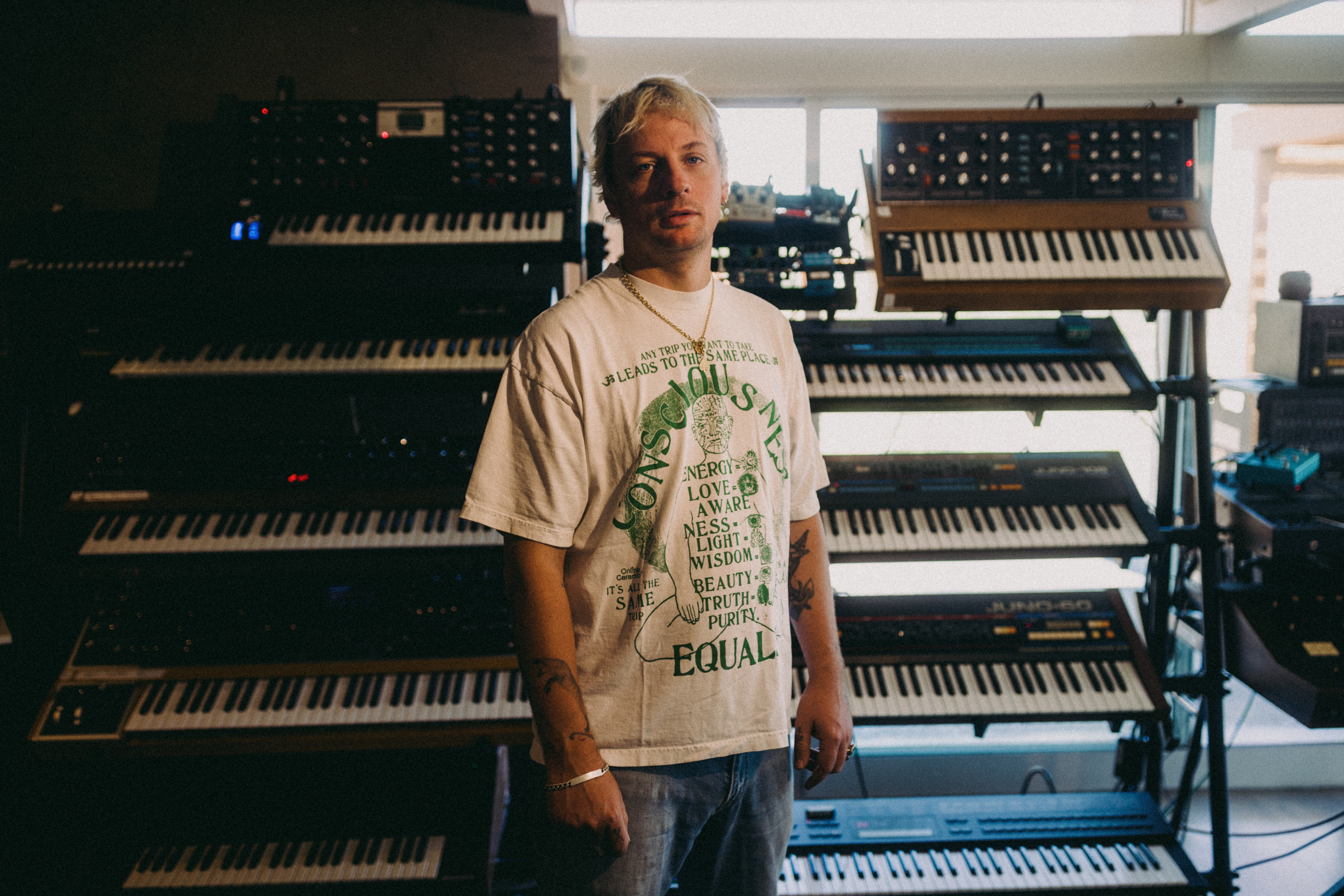 Curtains up, Kid Harpoon rethinks the sound of Broadway production ‘Art’
Curtains up, Kid Harpoon rethinks the sound of Broadway production ‘Art’He’s crafted hits with Harry Styles and Miley Cyrus; now songwriter and producer Kid Harpoon (aka Tom Hull) tells us about composing the music for the new, all-star Broadway revival of Yasmina Reza’s play ‘Art’